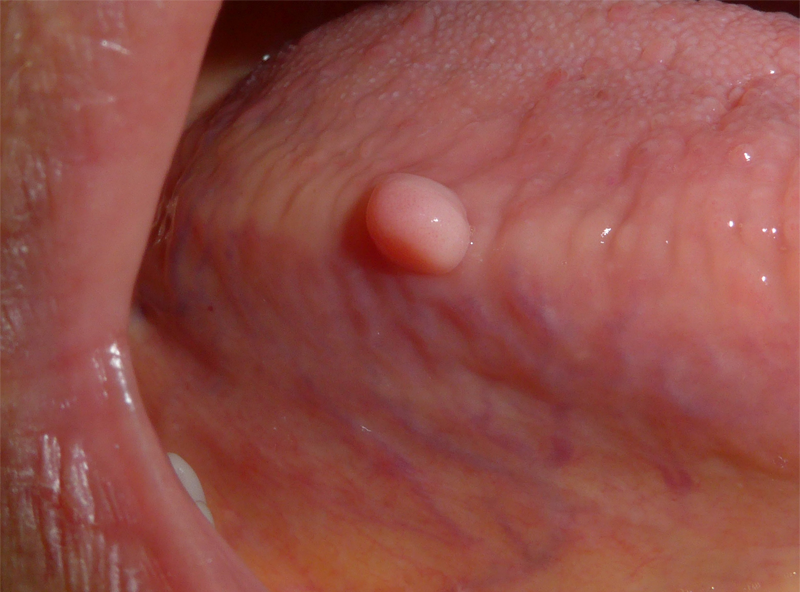Oral Lumps & Bumps
Bumps like the one in the photo above are common in most dental practices. The good news is that most of them are non-cancerous and constitute more of an annoyance that a significant health risk. The bad news is that a small number of these lumps and bumps may be a bit more nefarious than something you will occasionally chomp when eating and this is the rub – how can we tell the difference between them?
The process involves gathering a thorough history, including medical conditions, medications and habits. Is there a family history of oral cancer? Is there a history of diseases like diabetes or Hepatitis C? Is there a history of smoking? If so, how much? Alcohol use? If so, how much? Is there a betel quid habit? Is there a history of HPV infections?
Following this information-gathering exercise, an extra-oral and intra-oral examination is performed to look and feel for anything unusual. If a lump or bump is present, how long has it been there? Does it look like the surrounding tissue? Is it hard or soft? Does it move or does it feel “fixed” or as though it is anchored to the surrounding tissues? Is there an ulcer associated with it? For instance, the tongue lesion in the above picture has the same colour as the surrounding tissues; it is moveable; it has been present for years; it hasn’t changed size; and it is likely the result of trauma. All of that is consistent with a benign growth called a fibroma and it is easily managed with removal and biopsy.
Biopsy is a scary word for most people. It makes us think “cancer.”
Most biopsied tissue is not cancer, but it is common practice to evaluate anything unusual that is removed from the body even when it looks non-threatening. However scary it may feel, it is ALWAYS better to know what something is, which is why early evaluation is important. Many oral lumps or bumps don’t require removal, but if they do, it is relatively easy and involves some local freezing and a few stitches. There may be some discomfort afterwards that can be managed with medications like ibuprofen or acetaminophen.
If you have questions or concerns about any unusual lumps or bumps and would like to discuss this topic further with Dr. Shackleton, please contact our clinic anytime.
Sources
Family history of cancer, personal history of medical conditions and risk of oral cavity cancer in France: the ICARE study.
Radoï L1, Paget-Bailly S, Guida F, Cyr D, Menvielle G, Schmaus A, Carton M, Cénée S, Sanchez M, Guizard AV, Trétarre B, Stücker I, Luce D.
BMC Cancer. 2013 Nov 28;13:560. doi: 10.1186/1471-2407-13-560.
Oral conditions associated with hepatitis C virus infection.
Alavian SM1, Mahboobi N, Mahboobi N, Karayiannis P. Saudi J Gastroenterol. 2013 Nov-Dec;19(6):245-51. doi: 10.4103/1319-3767.121032.
Lumps and Bumps of the Gingiva: A Pathological Miscellany.
Brierley DJ1, Crane H1, Hunter KD2,3. Head Neck Pathol. 2019 Mar;13(1):103-113. doi: 10.1007/s12105-019-01000-w. Epub 2019 Jan 29.
Tongue Lumps and Bumps: Histopathological Dilemmas and Clues for Diagnosis.
Allon I1,2, Vered M3,4, Kaplan I3,5,6. Head Neck Pathol. 2019 Mar;13(1):114-124. doi: 10.1007/s12105-019-01005-5. Epub 2019 Jan 29.



